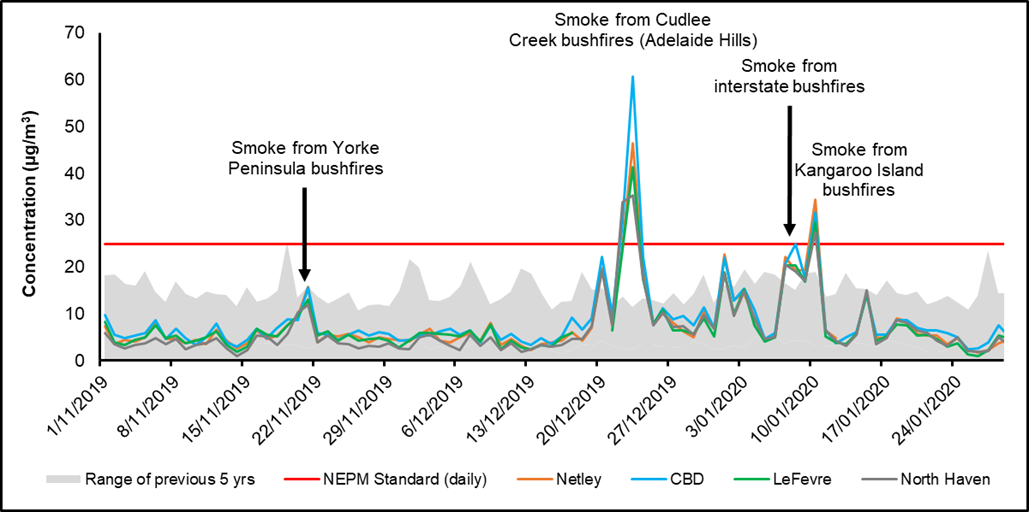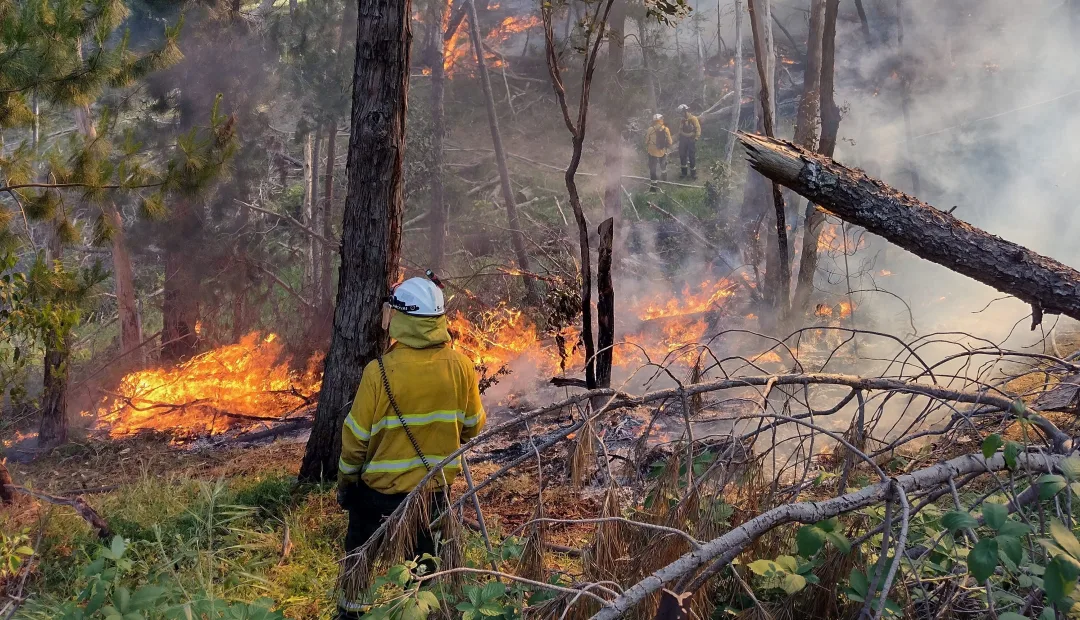Published:
Author:
Kangaroo Island in South Australia experienced bushfires that burned 211,500 hectares of land.
These fires lasted from November 2019 through February 2020 and impacted some of South Australia's most important ecological sites, including Flinders Chase National Park, home to the endangered and endemic Kangaroo Island dunnart and the glossy black cockatoo. An estimated 25,000 koalas were killed, and the habitats of many other animals were destroyed.
The impact on air quality in South Australia was significant with particulate pollution increasing during these bushfire events.
The graph below shows daily average PM2.5 concentrations in Greater Metropolitan Adelaide between November 2019 and January 2020, highlighting exceedances of daily NEPM PM2.5 standard, as a result of bushfires.

Health impacts of particulate exposure
Wood combustion can generate large amounts of tiny airborne particulate matter, also known as PM2.5 (particulate matter with an aerodynamic diameter of less than 2.5 microns). The smaller the size of any particle, the deeper it will penetrate the lungs.
PM2.5 exposure can cause significant health impacts. Numerous studies have shown associations between exposure to PM2.5 and increased hospital admissions as well as death from heart or lung diseases. Health effects can occur after both short- and long-term exposure to PM2.5.
Short-term exposure appears to exacerbate pre-existing diseases such as asthma and chronic bronchitis (chronic obstructive pulmonary disease or COPD). Long-term exposure over many years can lead to reduced lung function, cardiovascular and respiratory disease development and life expectancy.
Managing bushfire risk
Along with the Country Fire Service, SA Water, Department for Environment and Water and ForestrySA, the National Parks Wildlife Service of South Australia manages fires on more than 18 million hectares of public land for all South Australians.
The aim is to reduce the risk of bushfires on public and private land in strategic locations to safeguard the things people care about in their areas. This involves fire management tactics such as prescribed burns and other tools.
State Bushfire Coordination Committee is tasked with coordinating bushfire management in South Australia.
The CFS is a bushfire hazard leader in South Australia and oversees and coordinates the bushfire prevention activities of multiple agencies and landowners. DEW, CFS, ForestrySA, and SA Water work together to deliver an integrated approach to emergency management (prevention, preparedness, response, and recovery) across public (and some private) lands in high bushfire risk areas. This fire management planning at the state level is put into action at the regional level.
NPWS collaborates with conservation and industry groups and national emergency management agencies to reduce bushfire risk and fight fires.



